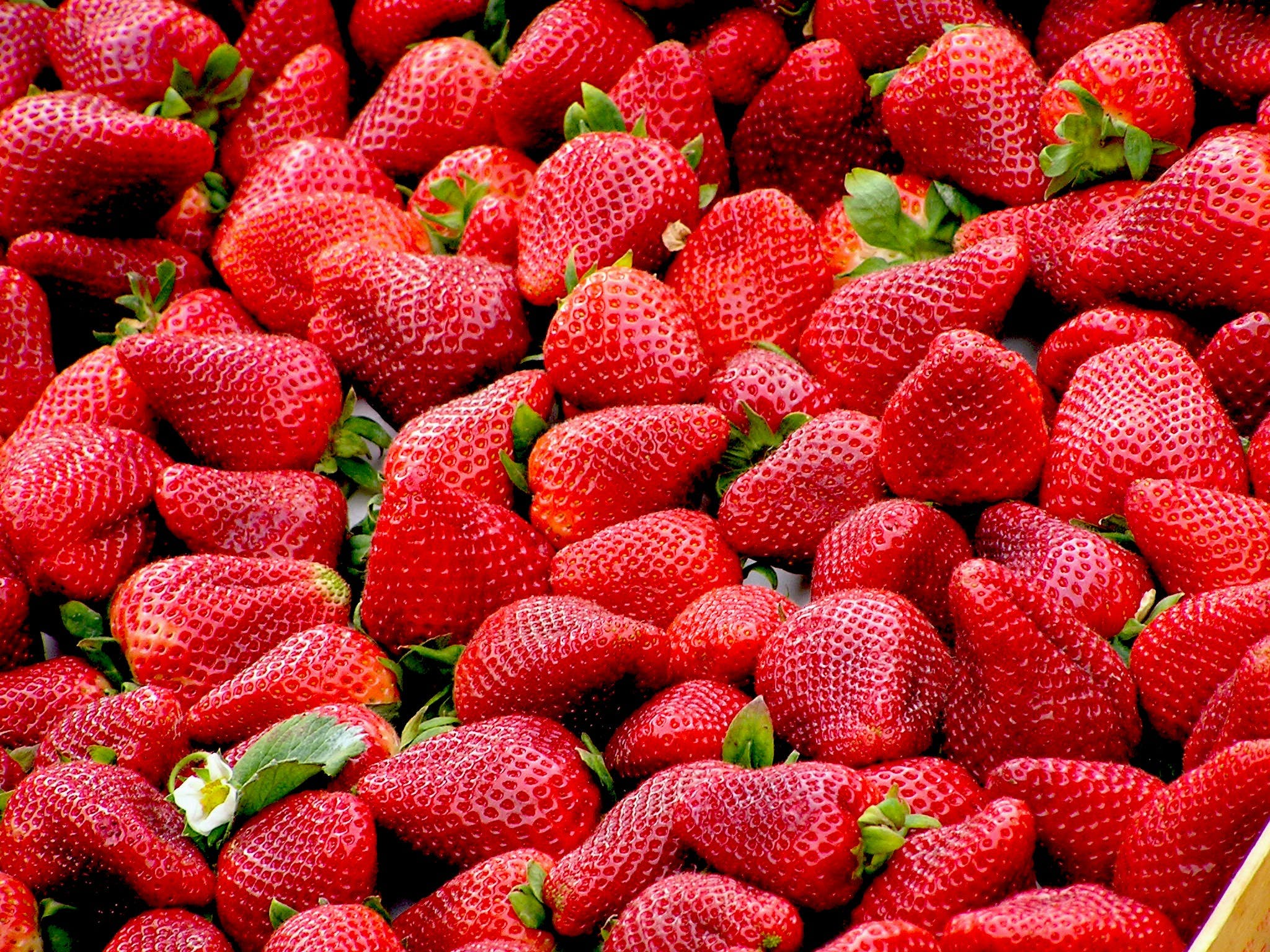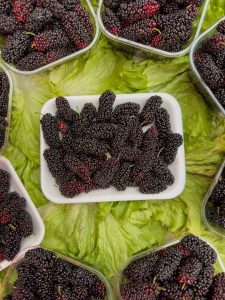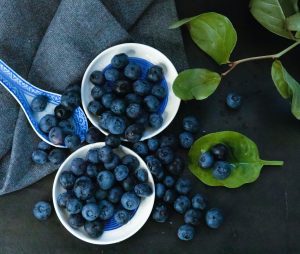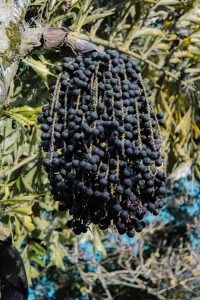
What Is a Strawberry?
A strawberry is a luscious and fragrant fruit that belongs to the Rosaceae family, renowned for its vibrant red hue, juicy texture, and sweet-tart flavor. Scientifically known as Fragaria × ananassa, it is a hybrid species originating from the crossbreeding of various wild strawberry varieties.
Strawberries are characterized by their small, heart-shaped form, adorned with tiny seeds on the surface. These berries boast a succulent, red pulp and are typically consumed fresh, although they are also used in a wide array of culinary delights, from jams and desserts to salads and beverages.
Rich in vitamin C, manganese, and antioxidants, strawberries contribute not only to their delectable taste but also to their nutritional value. Whether enjoyed on their own, dipped in chocolate, or as a delightful addition to diverse dishes, strawberries are a quintessential and beloved fruit celebrated for their appealing taste and versatility.
Why Do We Eat Strawberries?
We eat strawberries for a multitude of reasons, driven by their delectable taste, versatility, and numerous health benefits:
- Delicious Flavor:
- Strawberries are renowned for their sweet and tart flavor, making them a delightful treat enjoyed on their own or incorporated into various dishes.
- Versatility in Culinary Use:
- Strawberries can be used in a wide range of culinary applications, from fresh fruit salads and desserts like strawberry shortcake to jams, sauces, and smoothies.
- Rich in Nutrients:
- Strawberries are a nutritional powerhouse, containing essential vitamins (such as vitamin C), minerals, antioxidants, and dietary fiber that contribute to overall health and well-being.
- Antioxidant Properties:
- The antioxidants in strawberries, including anthocyanins and quercetin, help combat oxidative stress and inflammation, potentially supporting heart health and reducing the risk of chronic diseases.
- Hydration:
- With a high water content, strawberries contribute to hydration, particularly beneficial in hot weather.
- Weight Management:
- Strawberries are relatively low in calories and high in fiber, making them a satisfying and healthy option for those watching their weight.
- Boost to the Immune System:
- The vitamin C content in strawberries supports a robust immune system, helping the body defend against illnesses.
- Supports Heart Health:
- The antioxidants and potassium in strawberries may contribute to cardiovascular health by reducing blood pressure and supporting overall heart function.
- Desserts and Treats:
- Strawberries add a burst of color and flavor to desserts, enhancing the enjoyment of treats like cakes, pies, and ice creams.
- Refreshing Snack:
- Strawberries are a refreshing and convenient snack, requiring little preparation and offering a guilt-free option for those with a sweet tooth.
In summary, the consumption of strawberries is driven by their delicious taste, adaptability in various recipes, and their contribution to a balanced and nutritious diet, offering a combination of flavor and health benefits.
When Do We Eat Strawberries?
Strawberries are versatile and can be enjoyed at various times and in numerous settings. Here are common occasions when people eat strawberries:
- As a Snack:
- Strawberries make a convenient and healthy snack, perfect for munching on at any time of the day.
- Breakfast:
- Strawberries add a burst of flavor and color to breakfast options, such as cereals, yogurt, pancakes, or waffles.
- Desserts:
- Strawberries are a classic ingredient in desserts, from strawberry shortcake and pies to tarts, ice creams, and chocolate-dipped strawberries.
- Fruit Salads:
- Strawberries are a popular addition to fresh fruit salads, contributing sweetness and vibrancy.
- Smoothies and Juices:
- Strawberries are often blended into smoothies or used to flavor refreshing fruit juices, providing a delicious and nutritious element.
- Picnics and Outdoor Events:
- Strawberries are a refreshing addition to picnics and outdoor gatherings, offering a portable and easy-to-share treat.
- Special Occasions:
- Strawberries are commonly featured in celebrations and special occasions, either as part of a dessert spread or as a standalone treat.
- Brunch:
- Strawberry dishes, such as strawberry crepes or French toast with strawberries, are popular choices for brunch.
- Holidays:
- Strawberries may be incorporated into holiday-themed desserts or enjoyed as a festive and colorful snack during special occasions.
- Personal Indulgence:
- Many people indulge in strawberries simply for personal enjoyment, savoring their sweet and juicy flavor whenever the craving strikes.
The versatility of strawberries allows them to be enjoyed in various forms, from fresh and whole to incorporated into a wide range of dishes. Whether consumed on their own or as part of culinary creations, strawberries provide a burst of flavor and nutritional benefits that make them a favorite among fruit enthusiasts.
Ingredients of Strawberries
Strawberries, being a natural fruit, don’t have a long list of ingredients. Instead, they consist of various components that contribute to their taste and nutritional profile. Here are the main elements found in strawberries:
- Water:
- Strawberries have a high water content, contributing to their juicy and hydrating nature.
- Natural Sugars:
- Strawberries contain natural sugars, primarily fructose, which gives them their sweet taste.
- Vitamins:
- Strawberries are rich in essential vitamins, especially vitamin C, which supports the immune system, and manganese, important for various bodily functions.
- Dietary Fiber:
- Strawberries provide dietary fiber, promoting digestive health and contributing to a feeling of fullness.
- Antioxidants:
- Strawberries are packed with antioxidants, including anthocyanins and quercetin, which help combat oxidative stress in the body.
- Minerals:
- Strawberries contain minerals like potassium, which is crucial for maintaining proper fluid balance and supporting heart health.
- Phytonutrients:
- These natural compounds in strawberries contribute to their vibrant color and may have various health benefits.
It’s important to note that the specific nutrient content can vary slightly depending on factors such as the variety of strawberry and its ripeness. Enjoying strawberries in their natural state allows you to benefit from their nutritious components without any additional ingredients.
Types of Strawberries
There are numerous varieties of strawberries, each with its own unique characteristics in terms of size, flavor, and texture. Here are some common types of strawberries:
- Albion:
- Albion strawberries are known for their large size, vibrant red color, and sweet flavor. They are often used for fresh eating and are a popular choice for home gardens.
- Seascape:
- Seascape strawberries are known for their exceptional flavor, sweetness, and juiciness. They are often used in fresh applications, such as salads and desserts.
- Chandler:
- Chandler strawberries are renowned for their large size, bright red color, and sweet taste. They are often used in desserts, jams, and preserves.
- Honeoye:
- Honeoye strawberries are early-season berries known for their firm texture and sweet flavor. They are commonly used in jams and preserves.
- Tristar:
- Tristar strawberries are small, flavorful berries with a sweet and tangy taste. They are often used for fresh eating and in culinary applications.
- Quinault:
- Quinault strawberries are a popular choice for home gardens, producing medium-sized, sweet berries. They are often used in fresh applications.
- Earliglow:
- Earliglow strawberries are early-season berries known for their bright red color and sweet flavor. They are often used for fresh eating and in desserts.
- Ozark Beauty:
- Ozark Beauty strawberries are known for their firm texture and sweet-tart flavor. They are often used in culinary applications and for fresh eating.
- Jewel:
- Jewel strawberries are late-season berries with a rich flavor and firm texture. They are often used in fresh applications and desserts.
- Allstar:
- Allstar strawberries are known for their large size, sweet flavor, and vibrant red color. They are versatile and can be used in various culinary applications.
These are just a few examples of the many strawberry varieties available. The specific types may vary by region, and each offers a unique taste and texture for culinary enjoyment.
Signs of Ripe, Signs of Raw and Signs of Rotten Strawberries
Signs of Ripe Strawberries:
- Color:
- Ripe strawberries exhibit a vibrant, uniform red color. The shade may vary slightly depending on the variety, but the berries should generally have a rich, red hue.
- Fragrance:
- Ripe strawberries have a sweet and fruity aroma. A delicious scent at the stem end is a good indicator of ripeness.
- Texture:
- Ripe strawberries should be firm but not overly hard. They should yield slightly to gentle pressure without feeling mushy.
- Shape:
- Ripe strawberries typically have a plump and well-rounded shape, without any significant dents or misshapen areas.
- Glossy Appearance:
- Ripe strawberries often have a natural shine or gloss on their skin, indicating freshness.
Signs of Raw or Unripe Strawberries:
- Color:
- Unripe strawberries may have green or white areas, indicating that they haven’t fully developed their red color.
- Hardness:
- Unripe strawberries feel firm to the touch and lack the slight give that ripe strawberries have.
- Lack of Fragrance:
- Unlike ripe strawberries, unripe ones may not have a strong, sweet fragrance at the stem end.
- Matte Appearance:
- Unripe strawberries may appear dull or matte, lacking the natural shine associated with ripe berries.
Signs of Rotten Strawberries:
- Foul Odor:
- Rotten strawberries emit a foul or fermented smell, particularly around the stem end or when the berries are cut open.
- Mold:
- Visible mold on the surface or within the flesh is a clear sign of spoilage. Check the entire berry for any fuzzy or discolored patches.
- Soft or Mushy Texture:
- Rotten strawberries have a soft and mushy texture. Gently press on the berries to check for any signs of excessive softness or decay.
- Discoloration:
- Dark or off-color patches on the skin or flesh can indicate rotting or deterioration.
- Leaking Liquid:
- Any liquid oozing from the strawberries is a sign of internal breakdown and spoilage.
Checking these signs helps ensure that strawberries are selected at their peak ripeness for the best flavor and quality.
Summary
In summary, strawberries are vibrant and juicy fruits belonging to the Rosaceae family, characterized by their heart-shaped form, red hue, and sweet-tart flavor. Varieties like Albion, Seascape, and Chandler offer diverse tastes and textures.
Ripe strawberries boast a uniform red color, sweet fragrance, slight give to gentle pressure, and a glossy appearance. Unripe strawberries may have green or white areas, lack fragrance, and appear matte. Rotten strawberries emit a foul odor, show visible mold, have a soft or mushy texture, discoloration, and may leak liquid.
Enjoyed fresh, in desserts, smoothies, and more, strawberries are a nutritional powerhouse rich in vitamins, antioxidants, and dietary fiber. Their versatility makes them a beloved choice for snacks, breakfast, desserts, and special occasions, contributing to both culinary delight and overall well-being.






